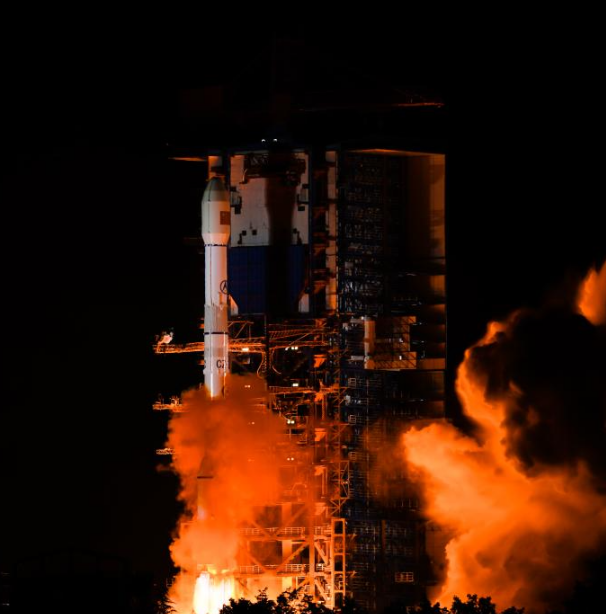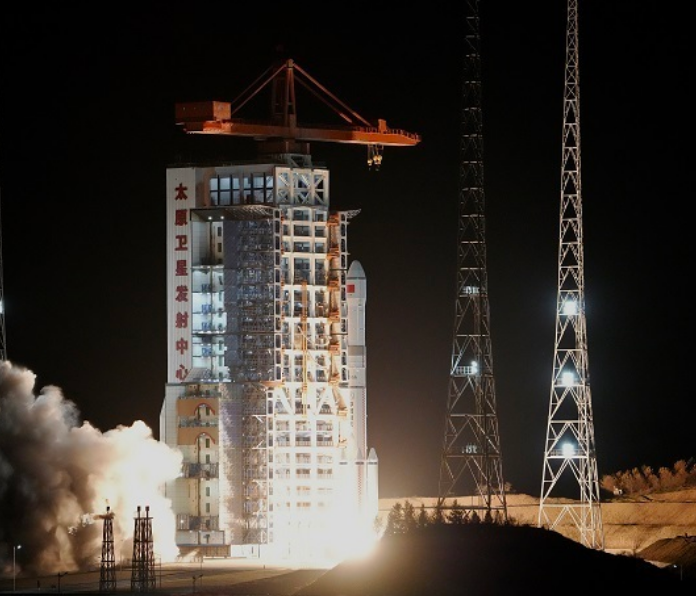21
2024-10
ESA launches Moonlight to establish lunar communications and navigation
ESA officially launched its Moonlight programme, a landmark initiative to create a satellite constellation orbiting the Moon for communications and navigation services. With over 400 planned lunar missions by space agencies and private companies in the next two decades, this programme marks a significant step towards sustainable lunar exploration and the development of a lunar economy.
The Moonlight Lunar Communications and Navigation Services (LCNS) programme will enable precise, autonomous landings and surface mobility, while facilitating high-speed, low-latency communication and data transfer between Earth and the Moon. This infrastructure is essential for humanity's return to and long-term presence on the Moon, while enhancing efficiency and significantly reducing operational and user costs.
The Moonlight programme addresses critical needs in human and robotic space exploration while creating commercial opportunities for European industry in the emerging lunar economy. It will play a crucial role in supporting future deep space exploration efforts.
Moonlight will consist of five satellites – four for navigation and one for communications – connected to Earth via three dedicated ground stations, creating a data network spanning up to 400 000 km. The satellites will be strategically positioned to prioritise coverage of the lunar south pole, an area of particular interest for future missions due to its "peaks of eternal light" suitable for solar power and "craters of eternal darkness" containing polar ice which can be a source of water, oxygen and rocket fuel.
Moonlight's implementation will occur in phases, beginning with the Lunar Pathfinder, a communications relay satellite manufactured by Surrey Satellite Technology Ltd (SSTL), set to begin operations in 2026. Following Lunar Pathfinder, Moonlight services will be gradually deployed, with initial operations by the end of 2028 and full operations by 2030.
ESA is collaborating with NASA and JAXA on LunaNet, a framework for lunar communication and navigation standards. This cooperation ensures compatibility with future lunar infrastructures and technologies, allowing a global customer base to benefit from Moonlight's services. Moonlight will comply with LunaNet’s standards and undergo the first-ever lunar navigation interoperability tests, planned for 2029.
ESA officially commenced the Moonlight programme with a contract signing ceremony at the International Astronautical Congress (IAC) in Milan. The ceremony was attended by Laurent Jaffart, ESA Director of Connectivity and Secure Communications; Javier Benedicto, ESA Director of Navigation; Daniel Neuenschwander, ESA Director of Human and Robotic Exploration; and Gabriele Pieralli, Chief Executive Officer of Telespazio.
“ESA is taking the crucial step in supporting the future commercial lunar market, as well as ongoing and future lunar missions. We are extremely proud to be working with industry and Member States to ensure that our technological capabilities can support and foster cooperation on the Moon with our international partners,” said ESA Director General Josef Aschbacher.
“Leading a prestigious pan-European team, Telespazio is committed to creating the conditions for a stable and secure presence on the Moon while simultaneously opening up extraordinary commercial opportunities for Europe in cis-lunar space,” said Gabriele Pieralli, CEO of Telespazio. “We are proud to play a crucial role in a program that will not only represent a key milestone in current and future space challenges but will also be a fundamental element in promoting synergies between ESA and other international space agencies."
"This year saw the first commercial soft landing on the moon, and we expect there to be hundreds of new lunar missions launching over the next decade alone. With these missions will come increased demand for communications and navigation services which can be provided by commercial entities,” said Dr Paul Bate, Chief Executive of the UK Space Agency. “The growth of a commercial lunar economy can bring real benefits back to Earth and, as one of the two leading international investors in Moonlight alongside Italy, the UK is a strong supporter of the programme. We will work closely with ESA, Telespazio, SSTL and a range of other British companies to develop and deliver innovative commercial lunar services that serve institutional and private sector customers alike."
"The launch of the Moonlight program is a cornerstone of Europe's role in future lunar activities, as its telecommunications and navigation infrastructure will pave the way for future exploration missions and the growth of a lunar economy. Italy is proudly at the forefront of this endeavour, leveraging its industrial excellence and with the strong support from ASI, and is committed to playing a major role in establishing a sustainable presence on the Moon, in cooperation with our international partners,” said Teodoro Valente, President of the Italian Space Agency.
About ESA’s Moonlight programme
ESA is working with industrial and institutional partners on the Moonlight programme to establish reliable autonomous communication and navigation infrastructure for the Moon. This multi-directorate initiative, led by Connectivity and Secure Communications (CSC) with support from Navigation (NAV) and Human and Robotic Exploration (HRE), opens a path for the development of technologies to support the permanent presence and sustainable return to the Moon and beyond. Moonlight will benefit upcoming ESA, international and commercial lunar missions by lowering barriers, increasing mission scientific return and pushing the boundaries of human knowledge and exploration.
-
29
2025-05

Tianwen-2 Mission Launched Successfully
At 1:31 AM today, China successfully launched the Tianwen-2 planetary exploration probe from the Xichang Satellite Launch Center using the Long March-3B Y110 carrier rocket.
-
13
2025-05

Communication Technology Experiment Satellite No. 19 Successfully Launched
At 2:09 on May 13, China successfully launched the Communication Technology Experiment Satellite No. 19 from the Xichang Satellite Launch Center using a Long March 3B carrier rocket. The satellite smoothly entered its predetermined orbit, and the launch mission was a complete success.
-
12
2025-05

Remote Sensing Satellite No. 40, Group 02, Successfully Launched
On May 11 at 21:27, China successfully launched the Remote Sensing Satellite No. 40, Group 02, from the Taiyuan Satellite Launch Center using a Long March 6A carrier rocket. The satellite entered its predetermined orbit smoothly, and the launch mission was a complete success.









